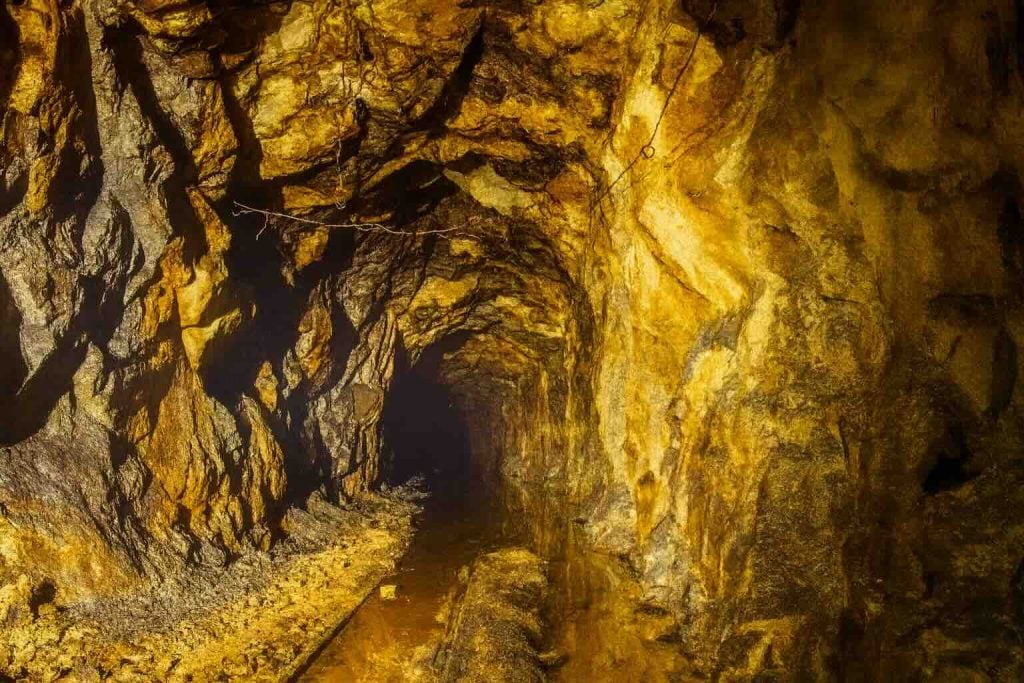China has announced that a newly identified deposit beneath the Wangu gold field in Hunan Province could contain more than 1,000 metric tons of gold, with an estimated 300 tons already found at shallower depths. The potential value of this reserve is close to 600 billion yuan, signaling one of the largest gold discoveries in recent years.
While such figures capture attention, experts stress that these numbers are early-stage estimates. As drilling and analysis continue, actual totals may shift, making this discovery both promising and preliminary.
What the numbers really mean
According to early geological reports, more than 40 gold-bearing veins have been detected at depths around 2,000 meters (approximately 6,560 feet), with models suggesting mineralization could extend to nearly 3,000 meters (9,840 feet).
These findings represent what geologists call a “first-pass estimate” — a phase where a deposit transitions from a geological hypothesis into a verifiable resource. Key to understanding this stage is ore grade, expressed in grams of gold per ton of rock (g/t). Higher grades mean more gold extracted with less waste, improving both efficiency and profitability.
The fieldwork was carried out by the Geological Bureau of Hunan Province and the Hunan Provincial Institute of Geology, who are leading the detailed study of the deposit. For comparison, South Africa’s South Deep mine, one of the world’s largest, holds about 870 tons of proven and probable reserves — showing how significant Wangu’s potential could be.
How geologists pinned it down
Exploration teams drilled tens of thousands of feet of rock core, mapped geological structures, and built 3D models to understand how the gold veins extend at depth. This systematic approach turns scattered samples into a coherent, mineable picture.
“Many drilled cores showed visible gold,” said Chen Rulin, an ore-prospecting specialist at the Geological Bureau of Hunan Province. Chen added that some samples recorded grades as high as 138 g/t near the 2,000-meter level — an impressive figure for individual samples.
However, experts caution that such high readings represent localized richness, not overall averages. It’s the combination of grade, thickness, and consistency that determines whether a deposit can become an operating mine. Future planning will depend on identifying zones large and continuous enough to justify the expense of deep mining infrastructure, including shafts, ventilation, and power systems.
Grade, depth, and what miners watch
Grade determines profit potential, while depth determines cost. Although deep mines can yield enormous returns, working at depth introduces technical challenges — greater heat, higher water pressure, and increased ventilation requirements.
In orogenic gold systems like Wangu’s, grades often vary widely within a single vein. A USGS review of similar systems found that many deposits average around 16 g/t, though local highs and lows are common.
Because mining deeper increases costs, continuity becomes as important as grade. Long, connected high-grade zones allow for smoother operations and safer mining conditions. Engineers also use “cutoff grade” — the minimum grade needed to remain profitable — to decide which parts of the ore body to mine. Rising energy and labor costs can push that threshold higher, forcing operations to focus on richer sections first.
Why this belt makes sense
The Wangu field lies within the Jiangnan orogenic belt, a geologically active region where ancient tectonic plates collided, fractured, and allowed gold-bearing fluids to circulate. This history makes it one of China’s most promising gold zones.
Peer-reviewed studies have long identified northeastern Hunan as a prime gold-producing area, with more than 315 tons of confirmed reserves before this new discovery. A 2024 geological study suggests that multiple overlapping mineralization events helped form the region’s thick, continuous veins.
Rock samples from Wangu show typical features of hydrothermal gold deposits — quartz veins, altered slates, and breccias with signs of sericitization and carbonation. These geological “fingerprints” confirm that Wangu follows the same processes seen in other productive mines such as Huangjindong. The nearby late Mesozoic granite and northeast-trending faults act as key conduits for gold-bearing fluids, guiding where future drilling might focus.
Next steps for the Hunan gold
As drilling continues, resource estimates will evolve. Additional holes and laboratory assays will refine the model, likely adjusting both the total tonnage and the average grade. Some initial highs may balance out as more moderate samples are added to the dataset.
The next major milestone is reserve conversion — verifying that the resource can be mined economically. If deeper drilling confirms thick, connected high-grade zones, the project could move toward mine design, environmental studies, and eventual development. If results become less consistent, exploration will likely refocus on the most promising zones.
Regardless of the outcome, the Wangu discovery stands out as a major scientific and economic development for Hunan. The region’s geology, structural framework, and mineral richness align perfectly with known gold-bearing systems — but as always, only continued drilling and data will reveal whether this golden promise becomes a world-class mine.
